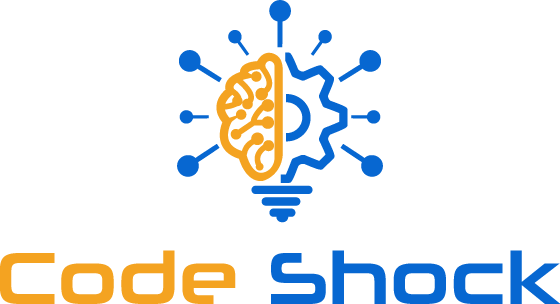JavaScript and Node.js are two popular technologies that play a significant role in modern web development. While they share similarities, it is important to understand their key differences to make informed decisions when working on web projects in 2024.
JavaScript is a versatile programming language that runs on the client-side of web applications. It is primarily used for enhancing user interfaces and interactivity. On the other hand, Node.js is a runtime environment that allows JavaScript to run on the server-side, enabling developers to build scalable and efficient applications.
One of the main differences between JavaScript and Node.js is their execution environment. JavaScript executes in a web browser, while Node.js runs on a server. This distinction is crucial as it determines the scope and capabilities of the code.
Another significant difference lies in the way they handle I/O operations. JavaScript is designed for event-driven programming and focuses on manipulating the DOM (Document Object Model) to interact with webpages. In contrast, Node.js is built on a non-blocking I/O model, making it suitable for handling large volumes of concurrent requests and performing server-side operations efficiently.
Furthermore, JavaScript and Node.js have contrasting libraries and frameworks. While JavaScript has an extensive collection of libraries and frameworks for frontend development, Node.js offers a variety of libraries and tools tailored for server-side development and building APIs.
Ultimately, understanding the differences between JavaScript and Node.js empowers developers to leverage the strengths of each technology effectively. By utilizing JavaScript for client-side functionalities and Node.js for server-side operations, developers can create robust and scalable web applications in 2024.
Key Takeaways:
- JavaScript and Node.js have different execution environments.
- JavaScript is primarily used for client-side web development, while Node.js enables server-side development.
- Node.js is designed for efficient handling of I/O operations.
- JavaScript has a wide range of libraries and frameworks for frontend development, while Node.js focuses on server-side development and building APIs.
- Leveraging the strengths of both JavaScript and Node.js can lead to the creation of robust and scalable web applications.

JavaScript Syntax and Projects
In this section, we will delve into the fundamental syntax and building blocks of JavaScript. Understanding the basics of JavaScript is essential for anyone looking to venture into web development and create interactive and dynamic websites and applications.
Getting Started with JavaScript Syntax
JavaScript code is written in plain text and embedded directly into HTML documents using the <script> tag. It can also be saved with a .js file extension and linked externally to a web page. The syntax of JavaScript is similar to other programming languages, making it relatively easy to learn for those familiar with coding concepts.
Here are some key elements of JavaScript syntax:
- Variables: Used to store and manipulate data. Variables can be declared using the var keyword.
- Data Types: JavaScript supports various data types, including strings, numbers, booleans, arrays, objects, and more.
- Operators: Used for performing mathematical and logical operations, such as addition, subtraction, comparison, and assignment.
- Conditional Statements: You can control program flow based on different conditions, using if, else if, and else statements.
- Loops: Used to repeat a block of code until a specific condition is met, utilizing for loops, while loops, and do-while loops.
- Functions: Blocks of reusable code that can be called and executed multiple times.
Mastering the syntax of JavaScript is crucial for writing clean and efficient code. Once you have a solid understanding of the basics, you can apply your knowledge to create various JavaScript projects.
Exploring JavaScript Projects
JavaScript projects showcase the power and versatility of the language, allowing developers to create interactive web experiences and dynamic functionalities. From simple website enhancements to complex web applications, JavaScript projects span a wide range of possibilities.
Here are a few examples of popular JavaScript projects:
- Interactive Forms: Enhancing user experience by validating input fields, implementing autofill functionality, and displaying real-time data validation.
- Image Sliders and Carousels: Creating visually appealing and dynamic image galleries that showcase multiple images responsively and interactively.
- Todo Lists: Building simple to-do list applications that allow users to add, remove, and mark tasks as completed.
- Interactive Maps: Integrating maps into websites, displaying markers, and providing custom interactions such as zooming and panning.
- Game Development: Developing browser-based games using libraries and frameworks like Phaser or PixiJS.
These projects highlight the versatility and practicality of JavaScript in web development. By combining JavaScript with HTML and CSS, developers can create engaging and dynamic web experiences.
"JavaScript is a powerful language that empowers developers with the ability to transform static websites into interactive and dynamic platforms." - John Johnson, Senior Web Developer
Now that you have explored the syntax of JavaScript and discovered some exciting projects, you are ready to dive deeper into JavaScript development and unleash your creativity.
| Essential JavaScript Syntax | JavaScript Projects |
|---|---|
| Variables | Interactive Forms |
| Data Types | Image Sliders and Carousels |
| Operators | Todo Lists |
| Conditional Statements | Interactive Maps |
| Loops | Game Development |
| Functions |
Node.js for Coding and AI
Node.js is a powerful runtime environment that offers unique features and capabilities, making it highly suitable for coding and artificial intelligence (AI) applications. With its efficient and scalable architecture, Node.js has become a favorite among developers looking to build robust and high-performance software.
When it comes to coding, Node.js provides a versatile platform for creating a wide range of projects. Whether you're developing a web application, a server-side API, or a command-line tool, Node.js offers the necessary tools and libraries to streamline your development process. Its event-driven, non-blocking I/O model allows for quick execution and optimal resource utilization, making it ideal for code-intensive projects.
Efficient and Scalable Code
One of the key advantages of using Node.js for coding projects is its ability to handle concurrent tasks with ease. Node.js employs a single-threaded, event-driven architecture that enables developers to write highly performant code. By leveraging asynchronous programming techniques, developers can avoid blocking operations and create code that seamlessly handles multiple tasks without sacrificing performance.
Additionally, Node.js facilitates the development of scalable applications by allowing for the easy creation of clusters and the distribution of workload across multiple instances. This enables developers to handle heavy traffic and large-scale applications with ease, making Node.js a popular choice for enterprises and organizations
AI Development with Node.js
Node.js has also gained significant popularity in the field of artificial intelligence. Its flexibility and performance make it a suitable platform for building AI applications that require complex computational tasks and real-time processing. Node.js can seamlessly integrate with popular AI frameworks and libraries, such as TensorFlow and PyTorch, allowing developers to leverage the power of machine learning and deep learning algorithms.
Furthermore, Node.js offers specialized libraries and modules for natural language processing (NLP) and data manipulation, making it an excellent choice for creating AI models that involve processing large volumes of text or working with complex datasets. Node.js also supports efficient inter-process communication, enabling seamless integration with other AI components or microservices.
AI to Code: The Power of GPT in Node.js
One particularly exciting development in the Node.js ecosystem is the integration of AI models, such as OpenAI's GPT (Generative Pre-trained Transformer), for code generation. With the help of GPT-powered tools, developers can automate the process of writing code snippets and even entire programs, enhancing productivity and efficiency in software development.
By providing the ability to transform natural language instructions into executable code, GPT-powered tools within Node.js open up new opportunities for developers to accelerate their coding process and explore creative solutions to programming challenges.
Overall, Node.js's unique features and capabilities make it an excellent choice for coding and AI projects. Its efficient and scalable code execution, coupled with its integration with AI frameworks and libraries, allows developers to create performant and innovative software. Whether you are working on a coding project or diving into the exciting world of AI development, Node.js provides a robust and flexible foundation to bring your ideas to life.
Learning JavaScript and Node.js
For individuals interested in learning JavaScript and Node.js, there are various resources and methods available to enhance skills and knowledge in these programming languages.
Training Programs:
Many organizations offer comprehensive training programs tailored specifically for beginners in JavaScript and Node.js. These programs provide a structured learning curriculum and hands-on exercises to develop practical coding skills. Examples of well-regarded training programs include:
- Codecademy: Offers interactive courses that introduce the basics of JavaScript and Node.js, allowing learners to build projects and gain hands-on experience.
- Udemy: Provides a wide range of online courses taught by experienced instructors, covering JavaScript and Node.js from beginner to advanced levels.
- General Assembly: Offers immersive coding bootcamps that include JavaScript and Node.js as part of their comprehensive curriculum.
Online Courses:
Online platforms host a myriad of courses dedicated to teaching JavaScript and Node.js. These courses often provide a flexible learning schedule and can be accessed from anywhere. Noteworthy online course platforms include:
- edX: Collaborates with renowned universities and institutions to deliver high-quality online courses, including JavaScript and Node.js programming.
- Coursera: Offers courses from leading universities and industry experts, covering JavaScript and Node.js for individuals at various skill levels.
- LinkedIn Learning: Provides a vast library of video tutorials and courses on web development topics, including JavaScript and Node.js.
Educational Platforms:
Aside from training programs and online courses, there are educational platforms that offer a diverse range of resources for learning JavaScript and Node.js. These platforms include:
- MDN Web Docs: Provides comprehensive documentation and guides for JavaScript and Node.js, serving as a valuable reference for developers.
- Stack Overflow: A popular online community where developers can ask questions, get answers, and learn from experienced programmers.
- GitHub: A platform for sharing and collaborating on code, offering a vast collection of JavaScript and Node.js projects that can be explored and studied.
By leveraging these resources, aspiring developers can embark on their journey to master JavaScript and Node.js, paving the way for exciting opportunities in the field of web development.

Conclusion
In conclusion, understanding the differences between JavaScript and Node.js is crucial for anyone engaged in web development in 2024. JavaScript, as a client-side scripting language, provides a robust foundation for building web applications and enhancing user interactions. Its versatility and compatibility make it a popular choice among developers worldwide.
On the other hand, Node.js, as a server-side JavaScript runtime environment, offers unique capabilities for coding server applications, handling network requests, and building scalable APIs. Its event-driven nature and non-blocking I/O architecture contribute to enhanced performance and efficient handling of concurrent connections.
By grasping the distinctive features of both JavaScript and Node.js, developers can leverage the strengths of each language to create efficient and innovative projects. They can use JavaScript to enhance the functionality and user experience of web applications while harnessing the power of Node.js to build high-performance server-side applications.
However, in the ever-evolving field of web development, continuous learning and practice are essential. As new technologies emerge and frameworks evolve, developers must stay updated and expand their knowledge to adapt to changing industry trends. Whether it's coding JavaScript or exploring the potential of Node.js, learning, experimenting, and honing one's skills is the key to success in the dynamic world of web development.
FAQ
What is the difference between JavaScript and Node.js?
JavaScript is a programming language primarily used for client-side web development, while Node.js is a runtime environment that allows developers to run JavaScript code on the server-side. Unlike JavaScript, Node.js can handle server-side operations and has access to system resources, making it suitable for building scalable web applications.
What is the syntax of JavaScript?
JavaScript syntax is based on a combination of programming concepts borrowed from Java, C, and other languages. It uses semicolons to separate statements, curly brackets to define code blocks, and various keywords and operators for control flow and manipulation of data. Understanding the basics of JavaScript syntax is essential for writing effective code.
What are some popular JavaScript projects?
JavaScript is widely used in web development to create interactive elements, animations, and dynamic content. Some popular JavaScript projects include building modern web applications with frameworks like React or Angular, creating data visualizations with libraries like D3.js, and developing games using HTML5 canvas and WebGL.
How does Node.js support coding and AI?
Node.js offers several features that make it suitable for coding and AI applications. It provides a non-blocking, event-driven architecture that allows developers to handle a large number of concurrent requests efficiently. Additionally, Node.js has access to various libraries and frameworks that facilitate AI development, such as TensorFlow.js for machine learning and Natural for natural language processing.
How can I learn JavaScript and Node.js?
There are several resources available for learning JavaScript and Node.js. Online courses, tutorials, and coding bootcamps offer comprehensive training programs for beginners and experienced developers alike. Additionally, documentation and community forums provide valuable reference material and support for individuals seeking to enhance their JavaScript and Node.js skills.






